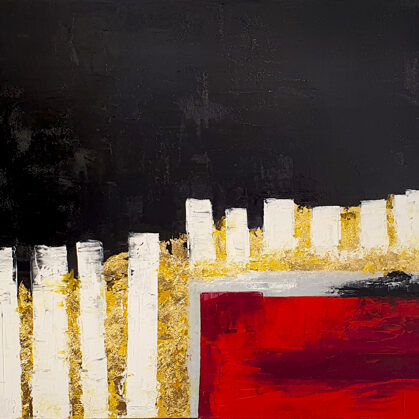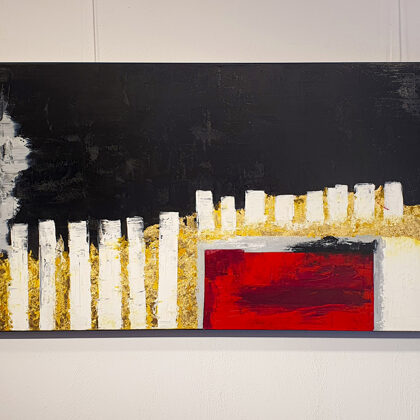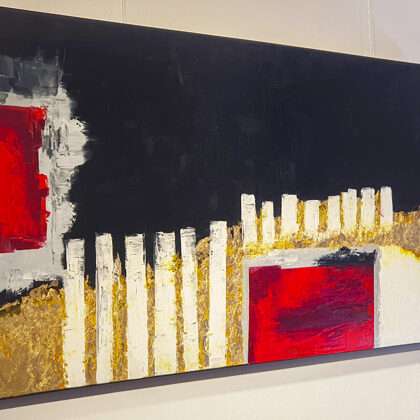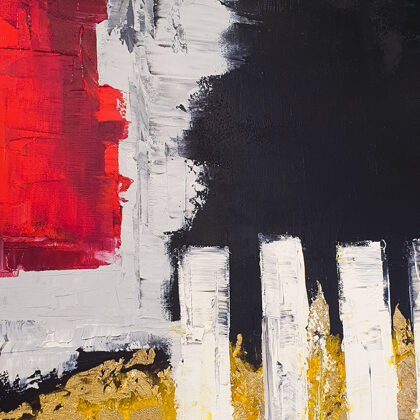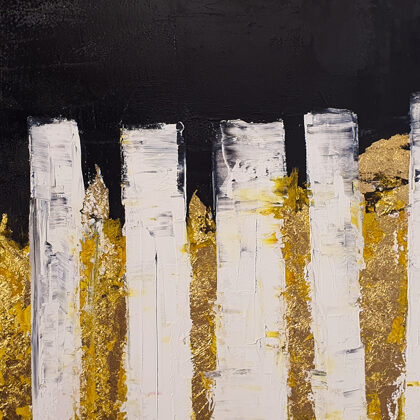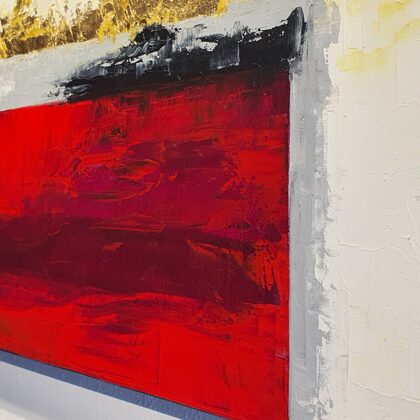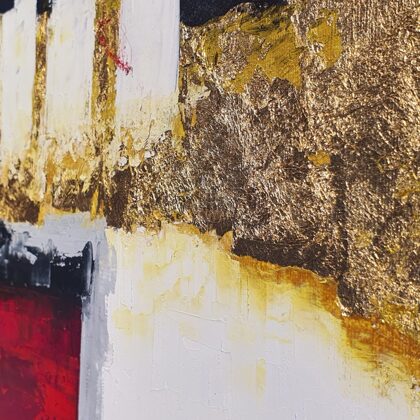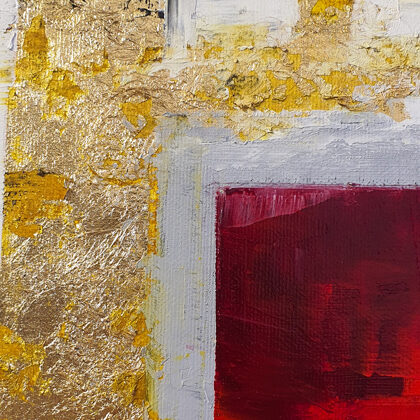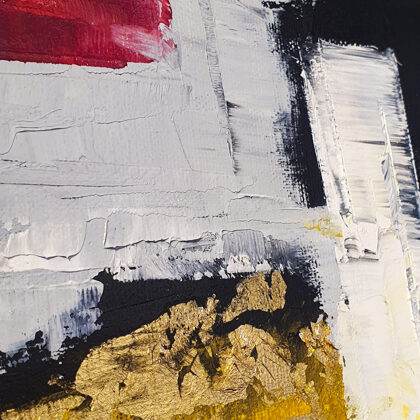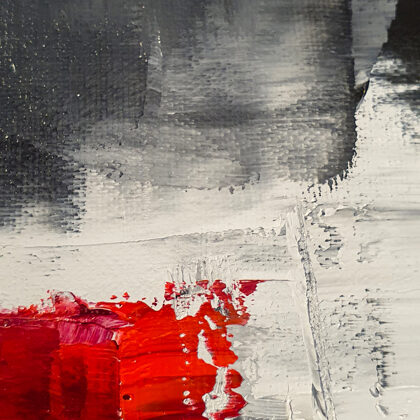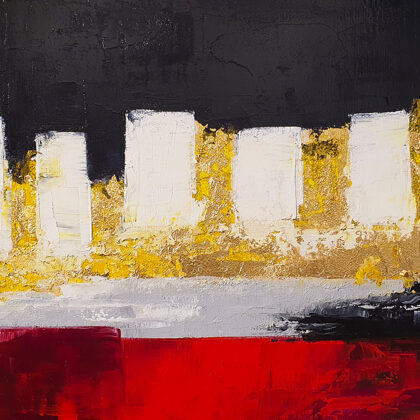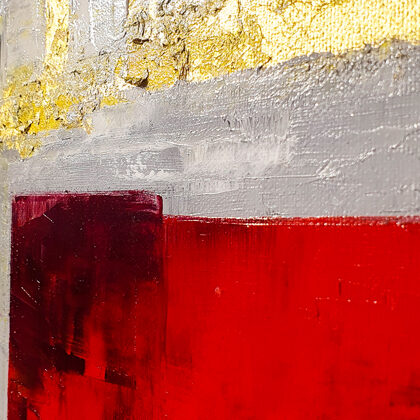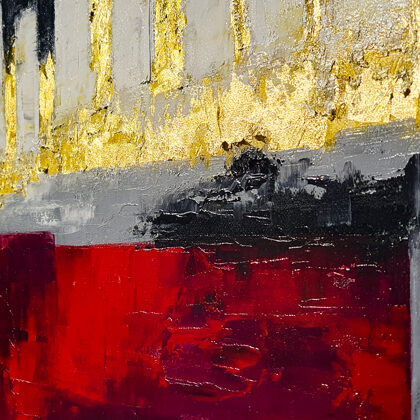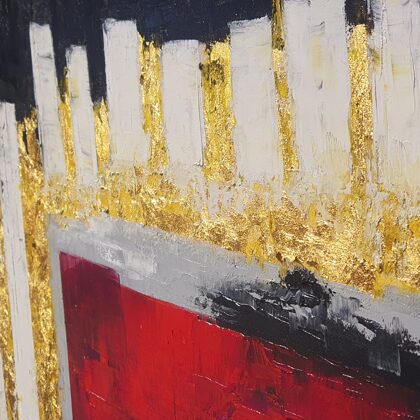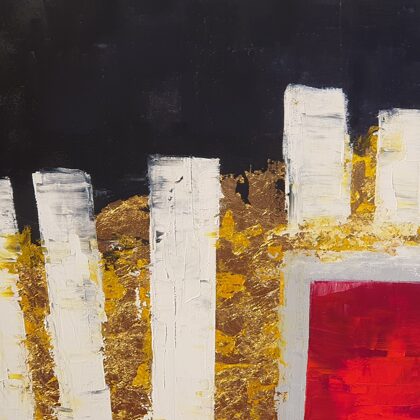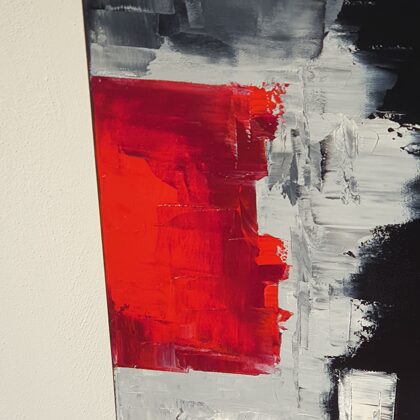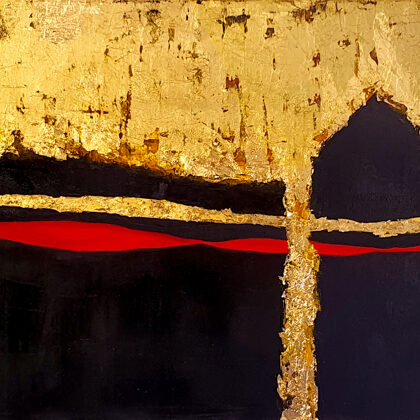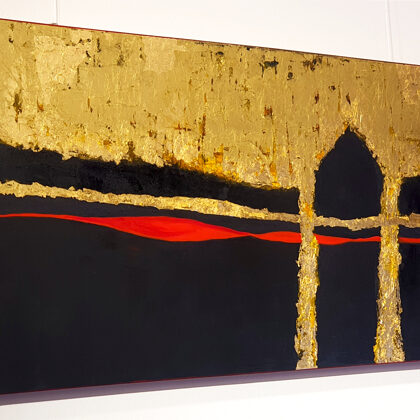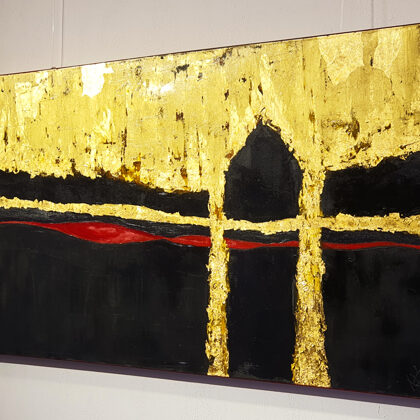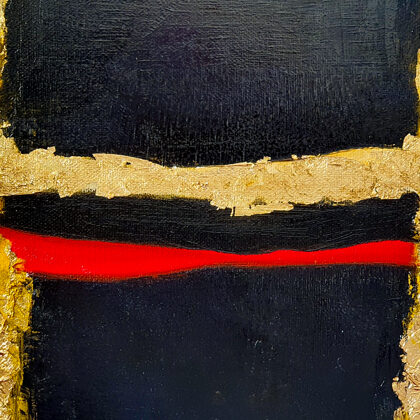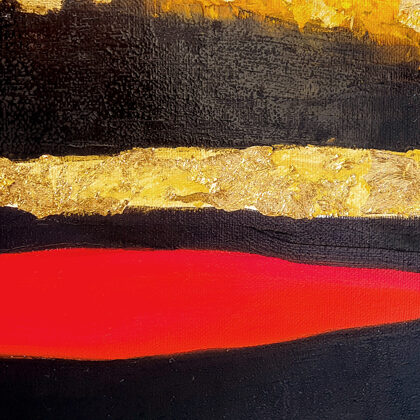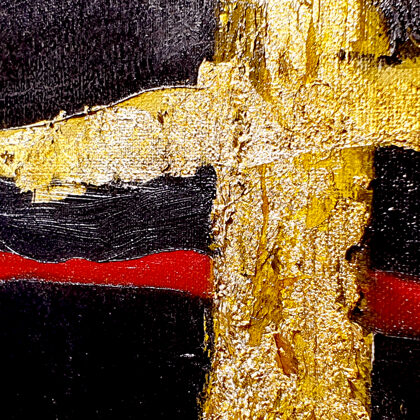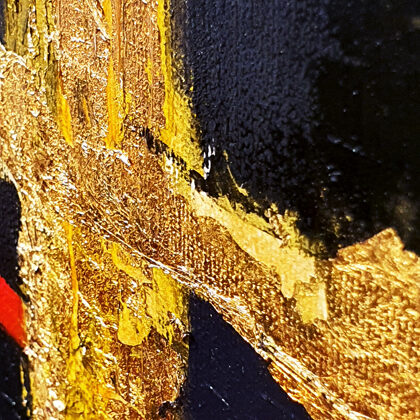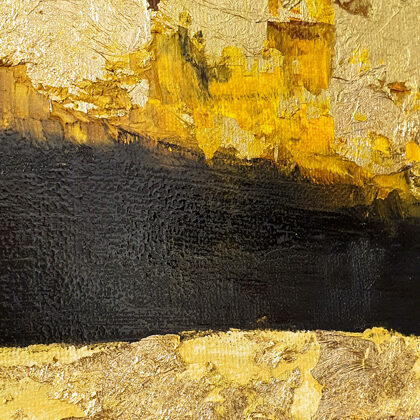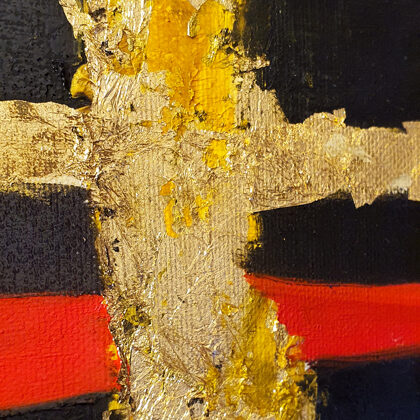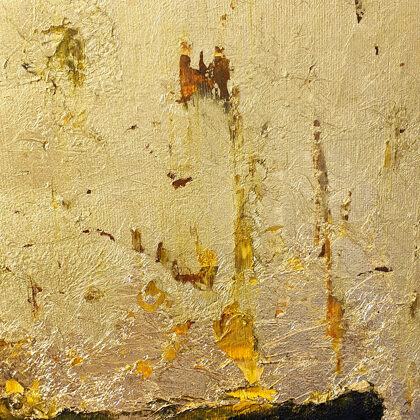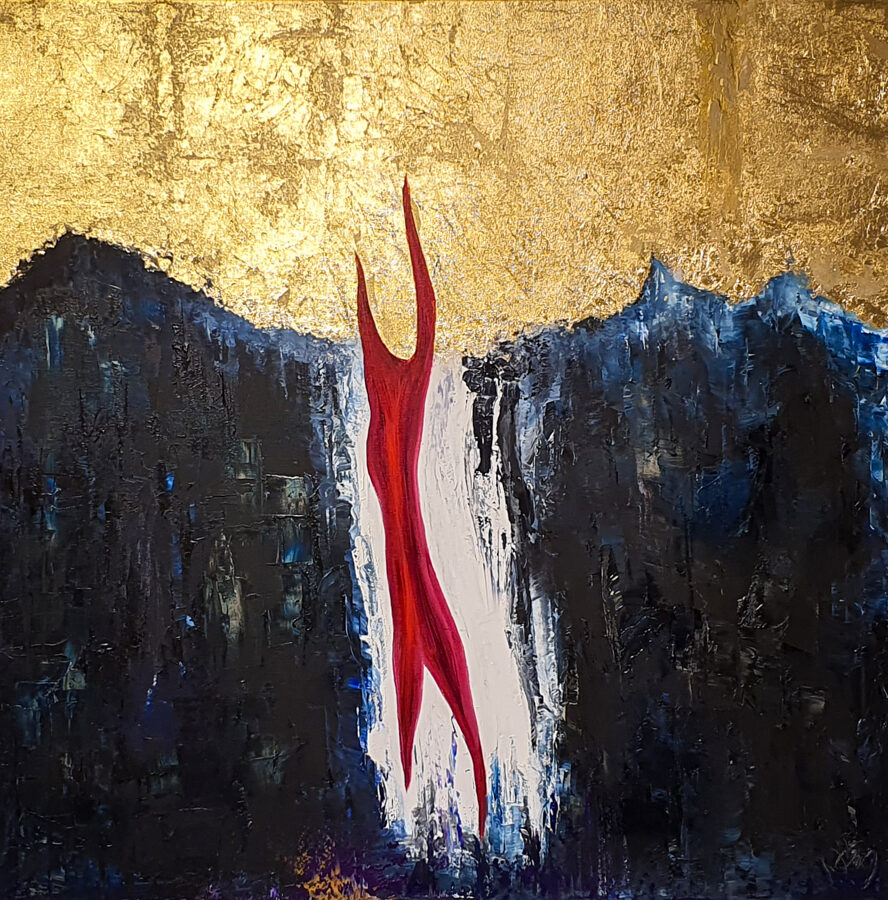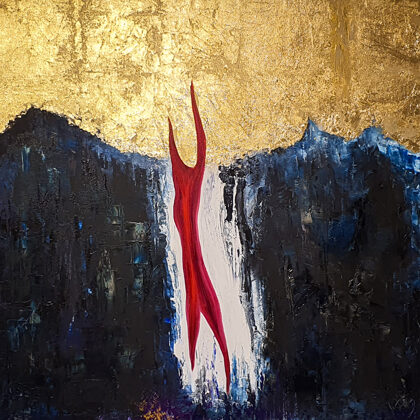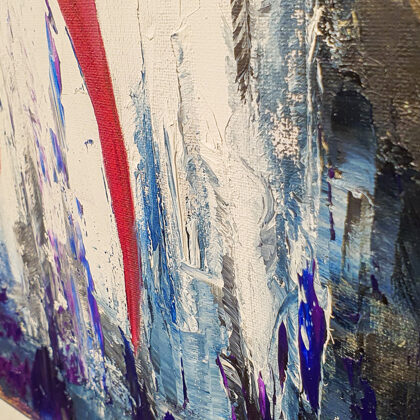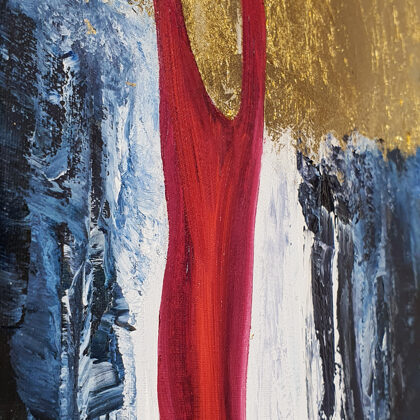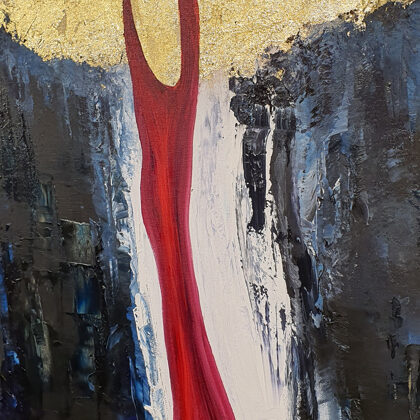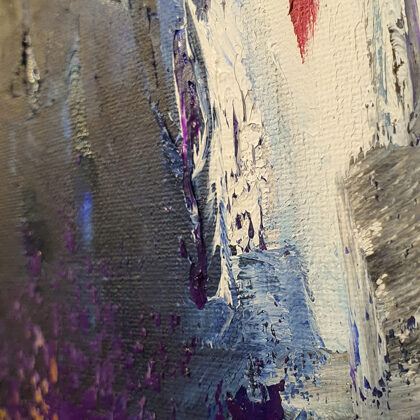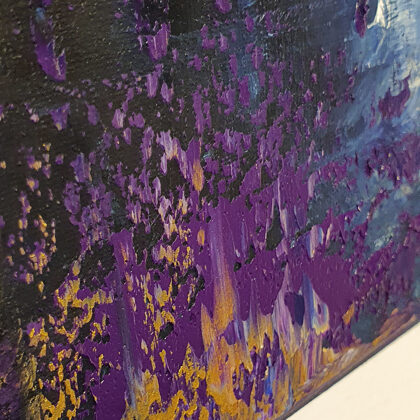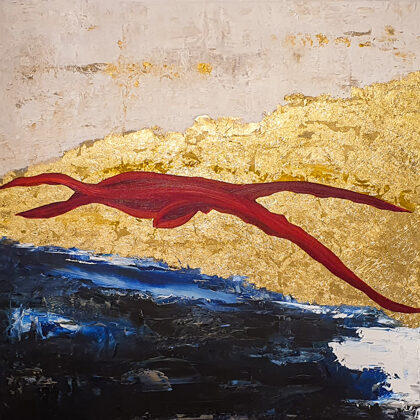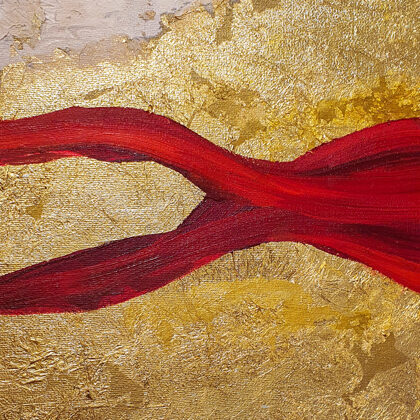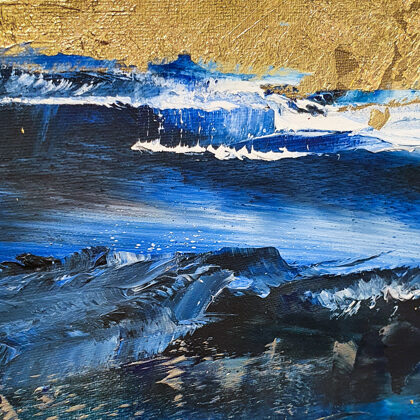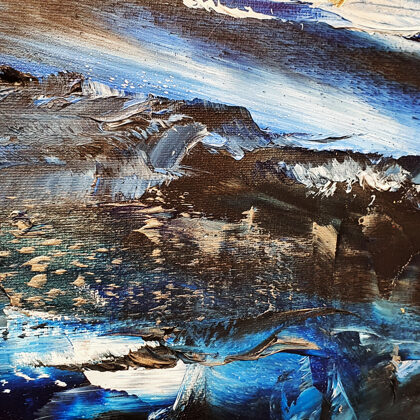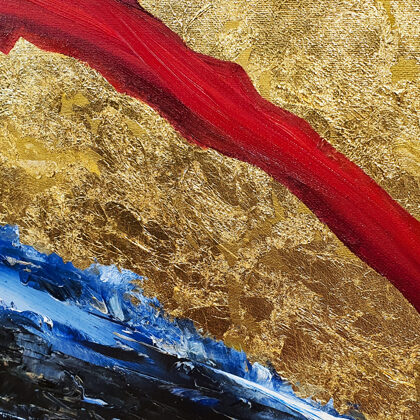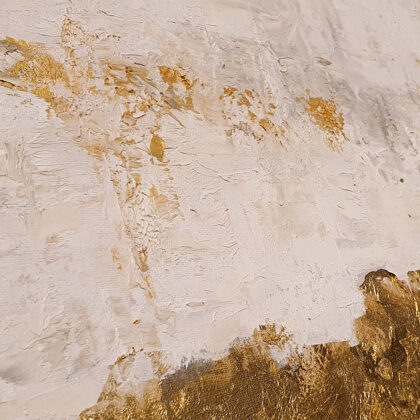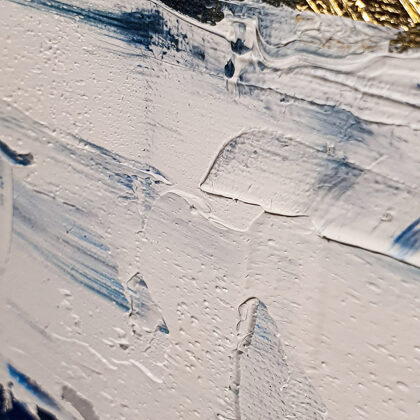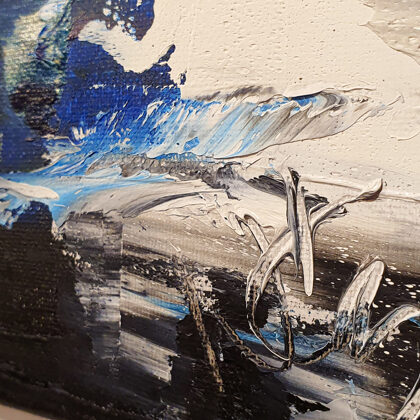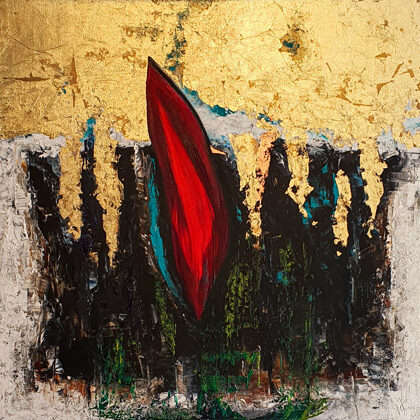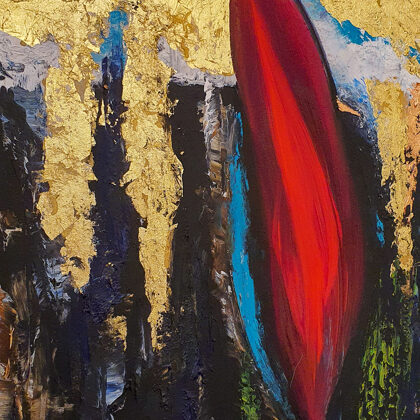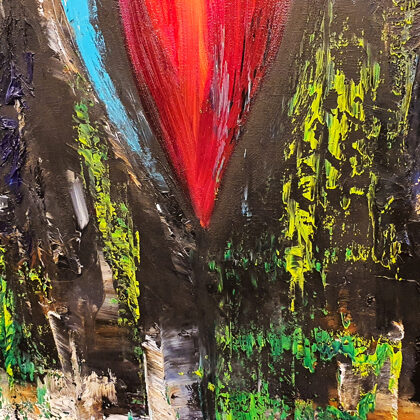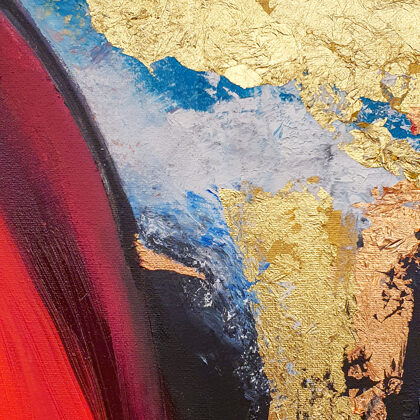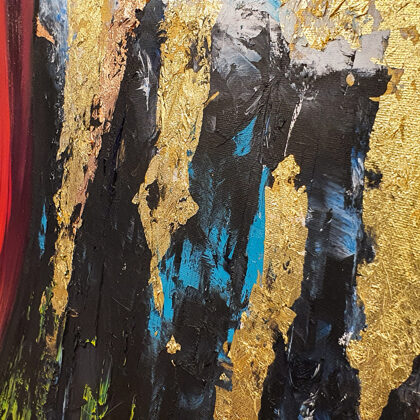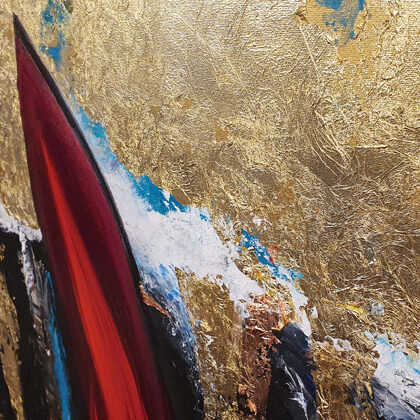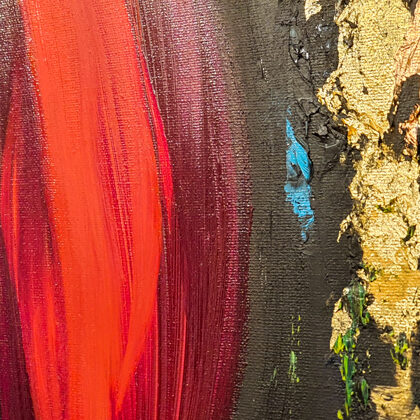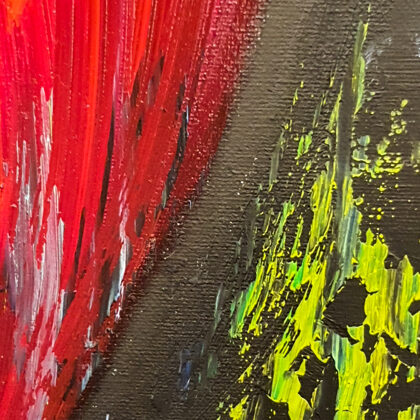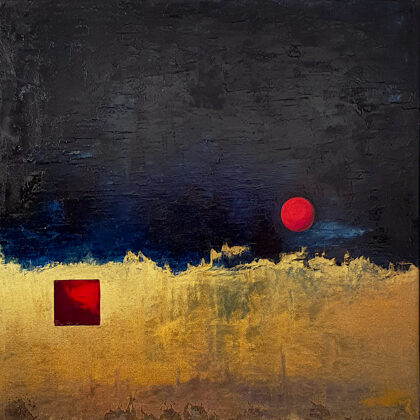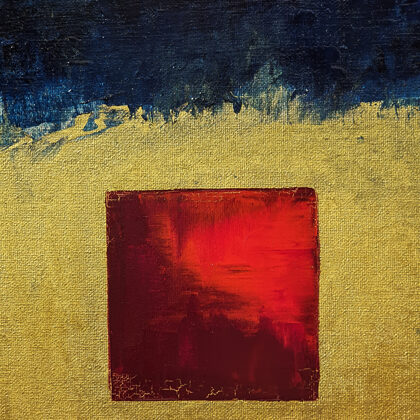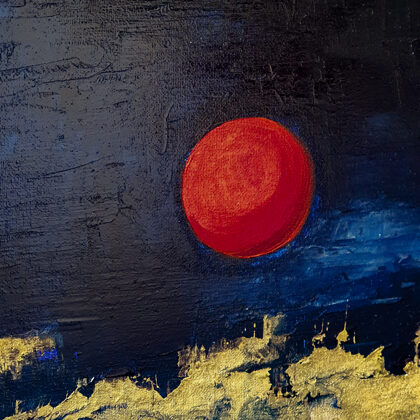V. Legion - Alaudae (Germania Inferior)
- 60 x 120 cm
- Oil-gold-canvas
- Place and date of creation: Sitges, 2022
- The artwork is part of 'Period of the Imperial Rome' collection
- The artwork is privately owned
'The V. legion founded by Caesar is an extremely important and infamous legion in the history of Rome. Fast, unexpected and cruel.
In this work of Tamás Náray a black background with infinite depth meets the curious eye of the viewer, a background that is actually the lifeless scene left behind after fatal battles. The frame is divided into two distinct surfaces: the Lower German and Upper German regions. The outposts, strongly highlighting the Roman defense lines and moats, are illustrated by red surfaces with gradual shrinking as foreshadowment of the approaching doom. In the colors used by the Hungarian artist a reference to current German colors can also be discovered.' prof.dr. Valeriano Venneri
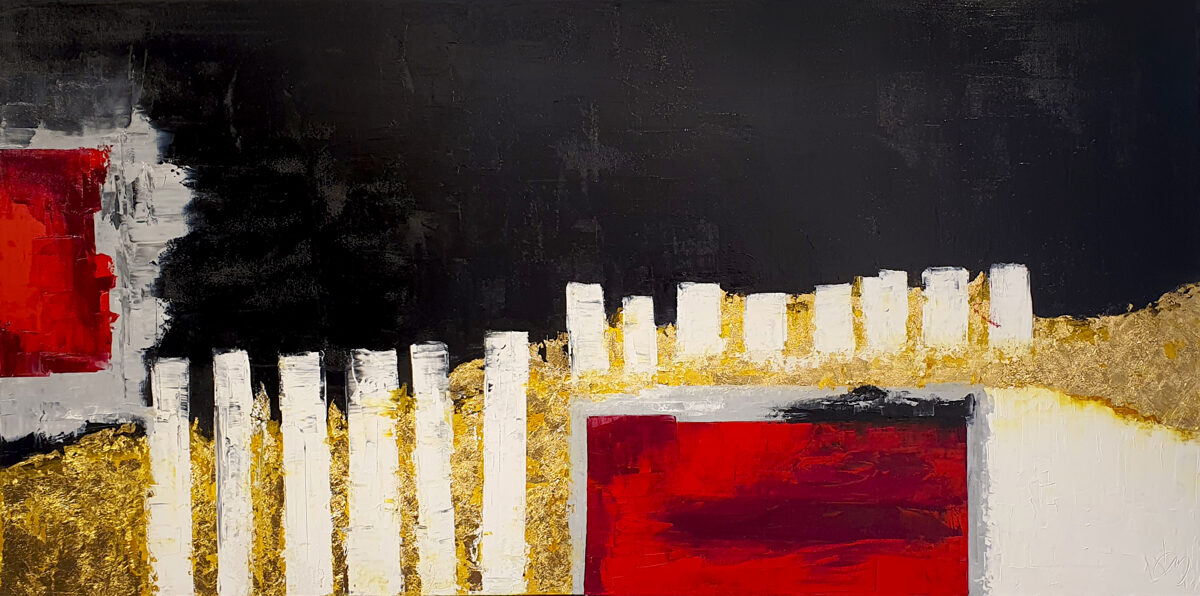
VIII. Legion - Augusta (Pannonia)
- 60 x 120 cm
- Oil-gold-canvas
- Place and date of creation: Sitges, 2022
- The artwork is part of 'Period of the Imperial Rome' collection
- The artwork is privately owned
'The other important legion of the Empire was founded by Gaius Julius Caesar VIII., its emblem being the dark bull. The upper black space unfolding from the lower base is elevated above the eternal times by an intense gold coating. The golden line below evokes the image of the aqueducts, while the other, reddish, blood-like stream symbolizes the god Mars, the battle and the road: it reminds us of the importance of ‘ab urbe condita’, but also of the nature of the divine. The piece, as we are used to from Tamás Náray, contains a symbolic reference as well, this time to Hungarians. The two vertical axes - Carnuntum and Aquincum - lift up the dome-shaped motif, reminiscent of the Hungarian holy crown, just like caryatids would.' prof.dr. Valeriano Venneri
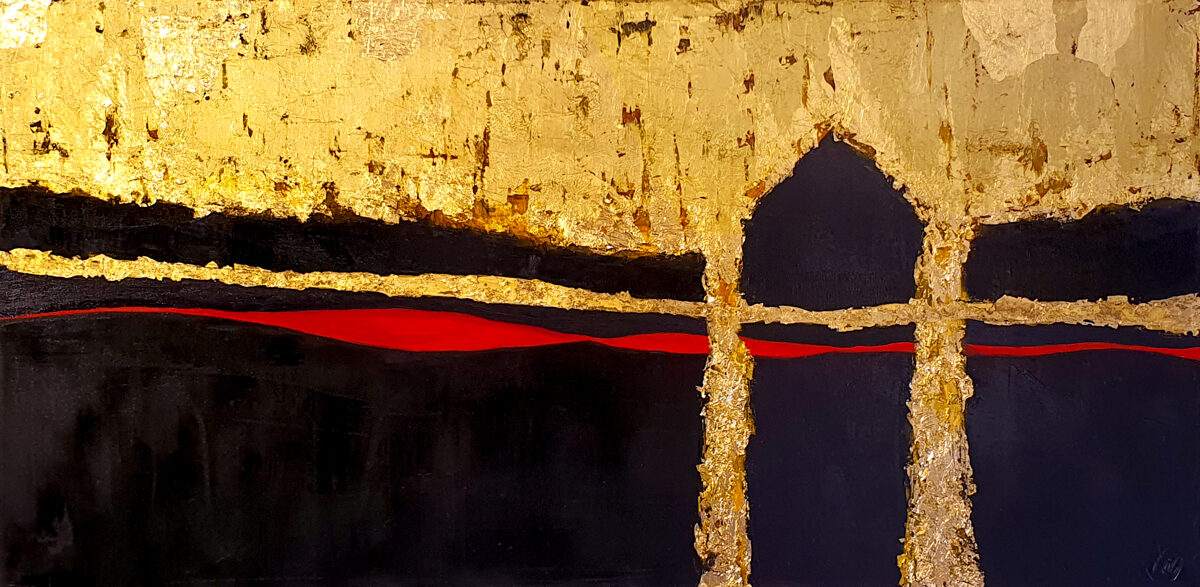
VI. Legion - Victrix (Hispania)
- 80 x 80 cm
- Oil-gold-canvas
- Place and date of creation: Sitges, 2022
- The artwork is part of 'Period of the Imperial Rome' collection
- The artwork is privately owned
'Roman historians still debate a lot about the role and deeds of the Sixth Legion. Tens of thousands of soldiers and mercenaries of the legion were stationed in Hispania for more than a hundred years, at the end assimilating to the conquered territory. As above, so below, the conqueror and the conquered became one in the brightness. The pointy and sharp, but slender shape, emerging from the pearlescent casing, reaches towards the skies with outstretched arms.
Tamás Náray is well-versed with the researches on legions, thus using colors true to the era and symbolism reminiscent of the god of war.
The Roman legions are primarily marked by symbols referring to animals, however the works of Tamás Náray usually eludes the literal approach, therefore offering texture solutions and color choices to bring the gods to earth: the blessing of Jupiter and Mars during the Roman conquests keeps the surface of the hard-worked canvas in an almost unnoticeable opalescent mist. In the art of Tamás Náray this heaven, imagined as divine will, is incredibly beautiful.' prof.dr. Valeriano Venneri
X. Legion - Fretensis (Syria)
- 80 x 80 cm
- Oil-gold-canvas
- Place and date of creation: Sitges, 2022
- The artwork is part of 'Period of the Imperial Rome' collection
- The artwork is privately owned
'This legion, whose symbol is the boar, is called the ‘legion of the ‘strait’, a word that also refers to closeness and brotherhood. The most interesting part of the piece is the continuous waving effect across the three levels, achieved with special coloring and structural solutions, in the middle of which a blood-colored figure sinks its tentacles: Rome occupies the rich valley of the Euphrates.
Tamás Náray builds up the three-layered surface with excellent sense and expertise: he creates unique, recognisable textures with the combination of the painter's knife and various brushes. His signature technique is the gilding; something that is known to him in countless forms.
The number ‘three’ is present as an almost constant compositional element in his works, not unlike a kind of higher perception of the infinite plane of time.' prof.dr. Valeriano Venneri
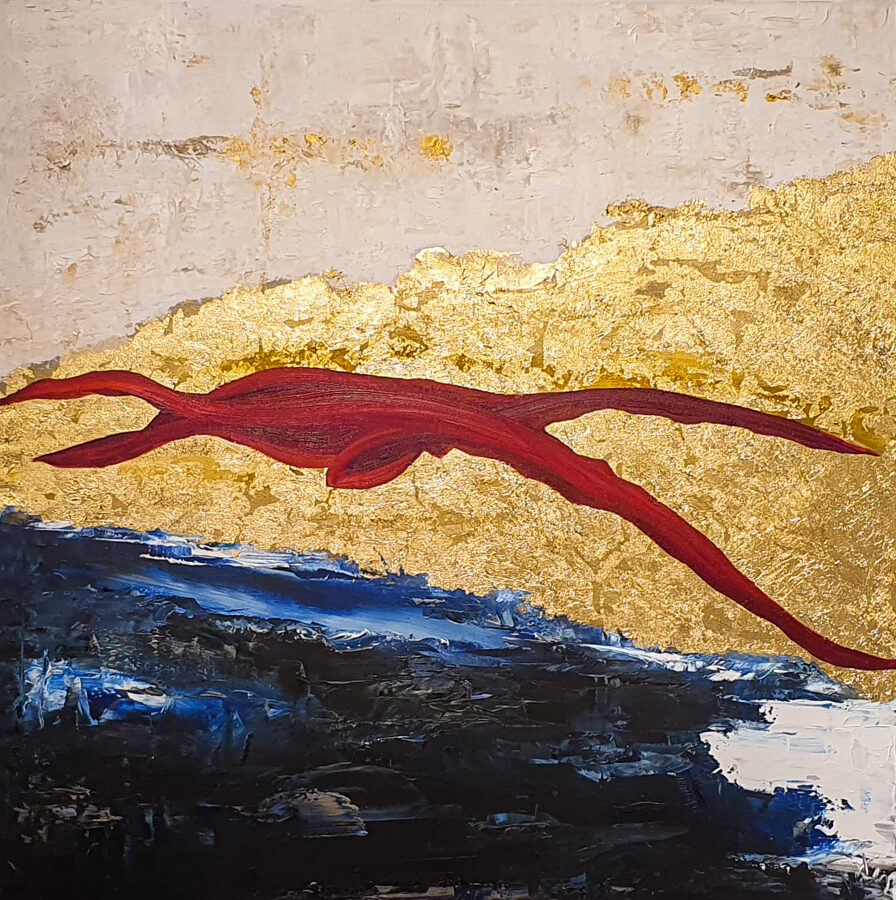
III. Legion - Cyrenaica (Aegyptus)
- 80 x 80 cm
- Oil-gold-canvas
- Place and date of creation: Sitges, 2022
- The artwork is part of 'Period of the Imperial Rome' collection
- The artwork is privately owned
'Tamás Náray paints the picture of the third Cyrene legion (Egypt) using special details, with colors of the divine will, the inexhaustible gold of the Egyptian civilization, and the gloom of the troops' military history. The blood-red flow of the central motif stands for the rebirth of ‘everything’, the holy chalice, the lotus flower, or the grail: i.e. the female womb.
The III. Legion is the most significant of all legions: it reveals and transports the Egyptian culture and its architecture - obelisks and colonnades - to the most distant parts of the European continent, however the most tragic battles and loves of all time also originate from here. Egypt is the land of sunlight-sent divine knowledge, knowledge and will that have already constructed the order of the world thousands of years ago. The darkening bars penetrating the golden surface represent the outer layers of the lotus flower of existence and the seven levels of consciousness.' prof.dr. Valeriano Venneri

IX. Legion - Hispana (Africa)
- 80 x 80 cm
- Oil-gold-canvas
- Place and date of creation: Sitges, 2022
- The artwork is part of 'Period of the Imperial Rome' collection
- The artwork is privately owned
'The last piece of the ‘Legion Series’ has two defining elements: an ominous, darkening sky above, full of unrest and tension, and a field below, standing as an invitation to the boundless, sun-drenched African lands. The brilliant idea of the Hungarian artist is to use a red square to symbolize earthiness and a red sphere to depict the divine - so important to the Romans - and the flight of birds in the sky (like the eagle, as a symbol of the empire). Much like in geometry, these are two elements that complement rather than oppose each other.' prof.dr. Valeriano Venneri
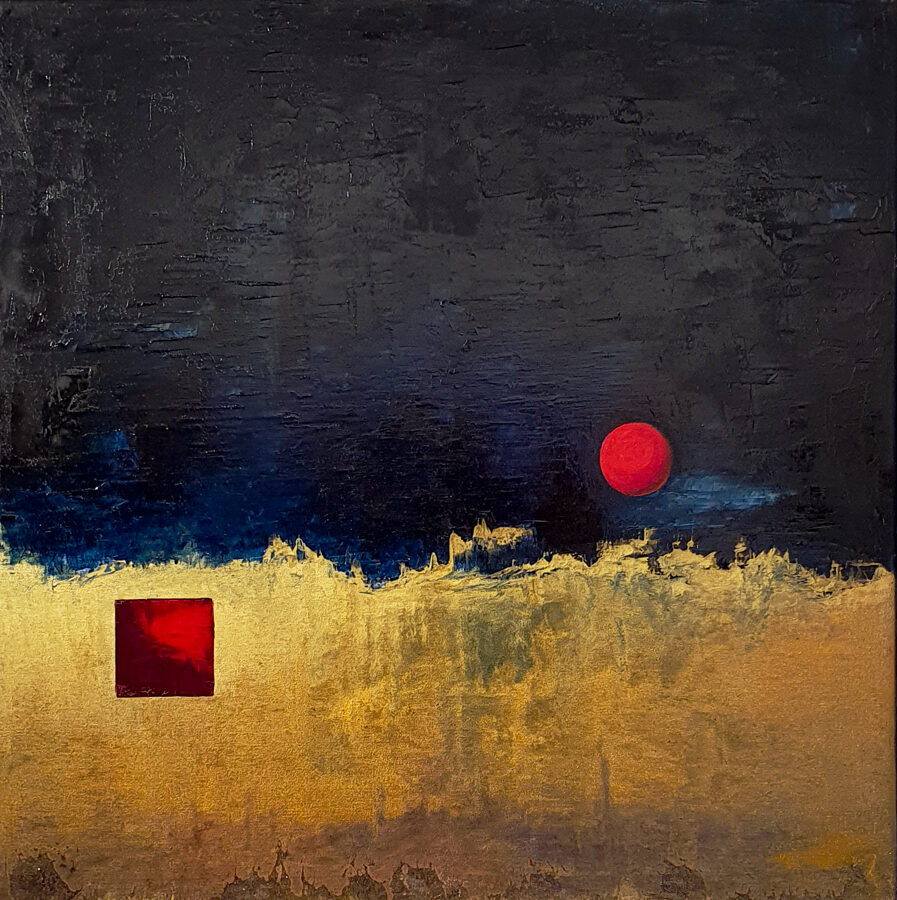
Cart
Cart is empty.

